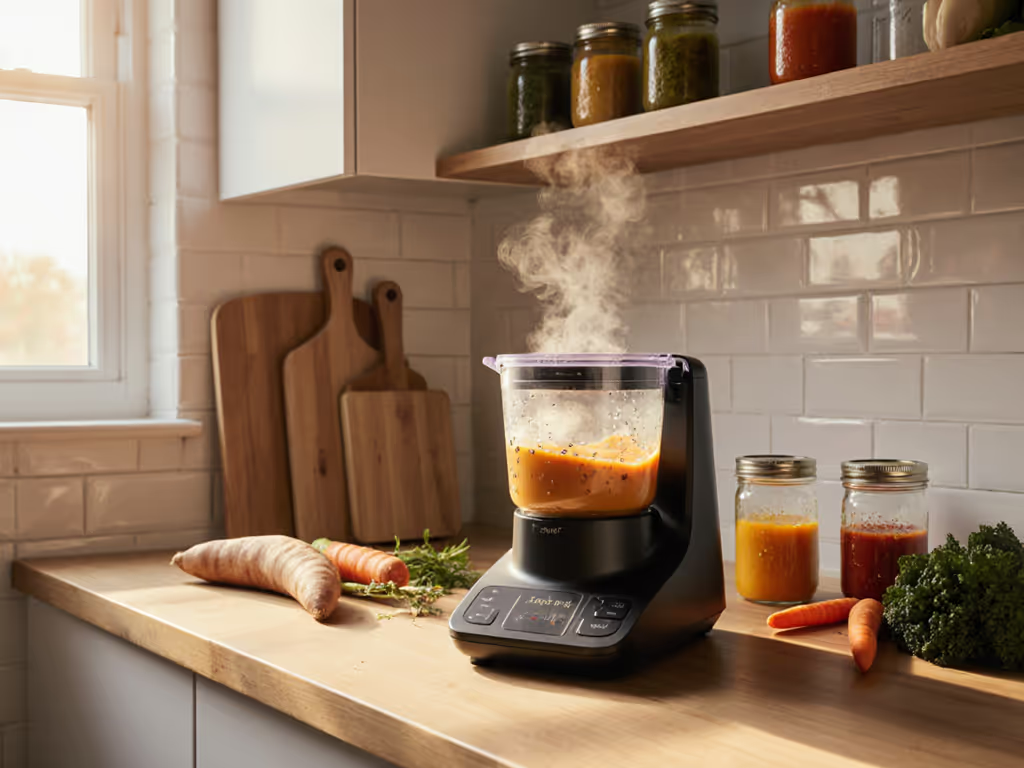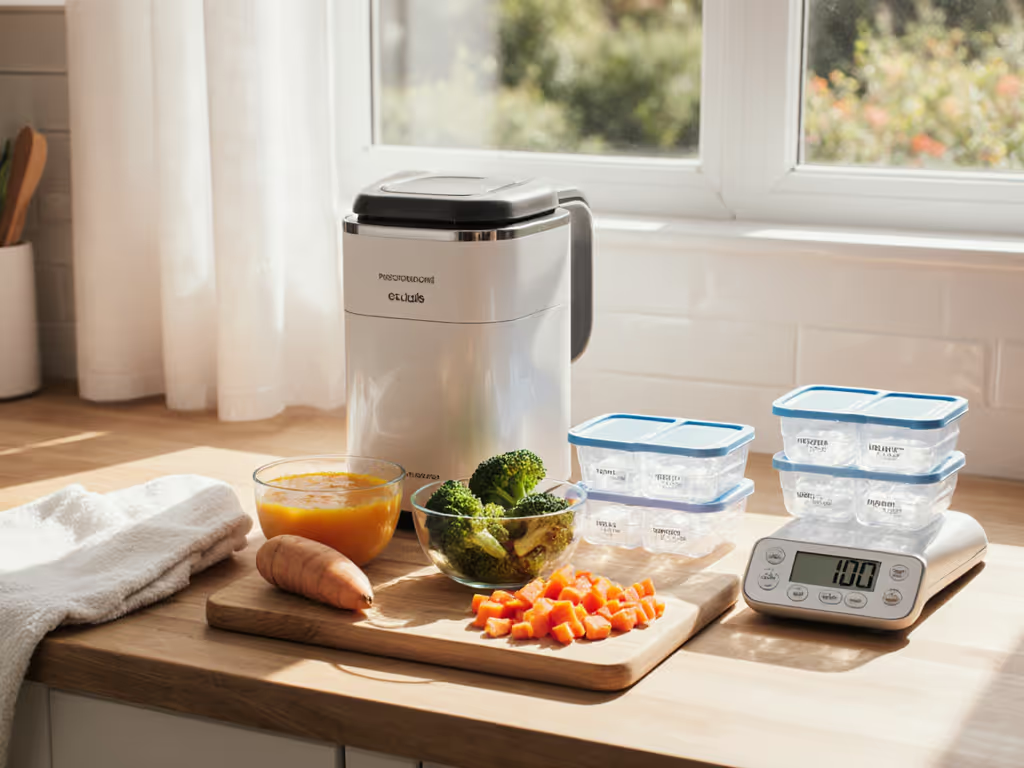
Why Use a Baby Food Maker: Complete Guide
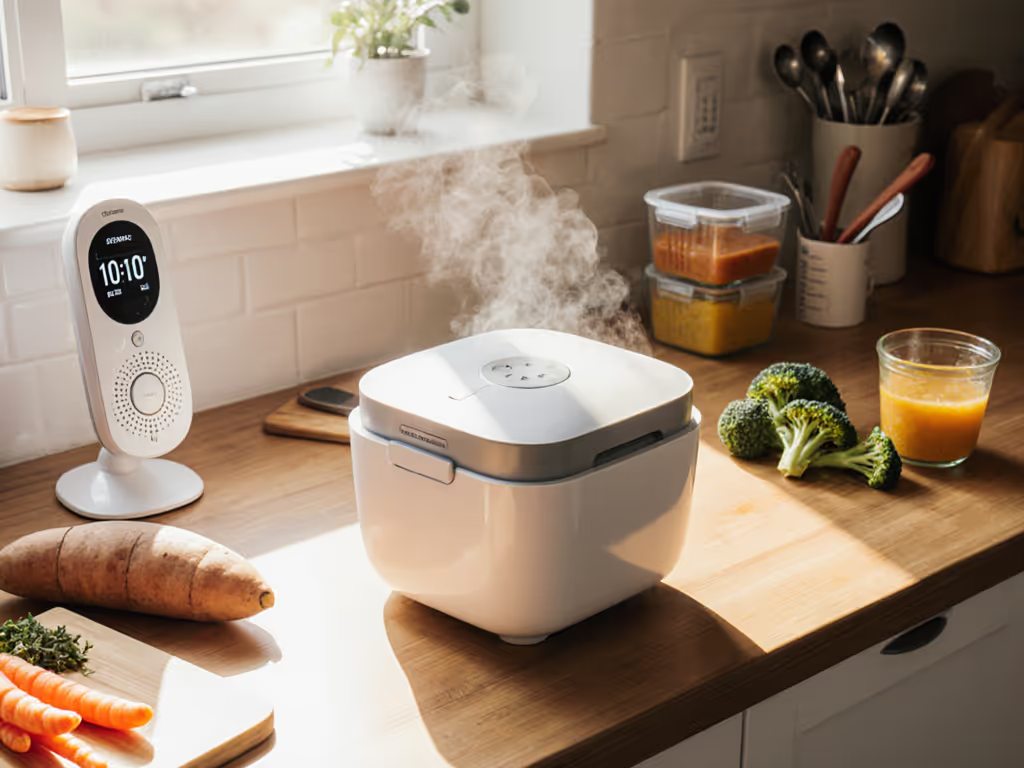
Did you know that parents can save up to $1,000 a year by preparing homemade baby food with the right appliance? Fresh meals tailored to your baby's needs offer clear advantages over store-bought jars and packets. From nutrient-packed purees to time-saving functions, modern baby food makers are changing how families approach infant nutrition. Discover how a single tool can help you create healthy meals with less stress and greater confidence.
Key Takeaways
| Point | Details |
|---|---|
| Nutritional Benefits | Baby food makers preserve more nutrients through gentle steaming, allowing parents to provide healthier meals. |
| Customizable Meal Preparation | These devices enable parents to control ingredients, ensuring meals are free from additives and tailored to their infant's needs. |
| Cost and Time Efficiency | Homemade baby food can save significant money compared to pre-packaged options, and the preparation process typically takes under 15 minutes. |
| Material Safety | Prioritize baby food makers made from safe materials to protect infant health, avoiding harmful substances like BPA and PVC. |
Defining Baby Food Makers and Core Benefits
A baby food maker is a specialized kitchen appliance designed to simplify and streamline infant meal preparation. Unlike traditional cooking methods, these compact devices combine multiple functions into one convenient tool: steaming, blending, and sometimes even storing baby food with minimal effort. Parents can transform fresh ingredients into nutritious, custom purees and meals tailored precisely to their infant's developmental nutritional needs.
The core benefits of baby food makers extend far beyond simple convenience. These devices offer parents critical advantages in nutrition and food preparation:
- Nutrient Preservation: By using gentle steaming techniques, baby food makers help retain more vitamins and minerals compared to traditional boiling methods
- Customization: Parents can control exactly what goes into their baby's meals, avoiding processed ingredients and unnecessary additives
- Cost Effectiveness: Preparing homemade baby food can significantly reduce monthly grocery expenses compared to purchasing pre-packaged options
- Time Efficiency: Most baby food makers complete cooking and blending processes in under 15 minutes, perfect for busy parents
These appliances represent more than just kitchen gadgets. They are powerful tools that empower parents to provide fresh, nutritionally optimized meals while maintaining control over their infant's diet. From supporting early nutritional development to offering peace of mind about ingredient quality, baby food makers transform meal preparation from a potentially stressful task into an enjoyable, efficient process.
Types of Baby Food Makers Explained
Navigating the world of baby food makers reveals a diverse landscape of appliances designed to meet varying parental needs and preferences. These devices can be broadly categorized into several distinct types, each offering unique advantages for meal preparation and infant nutrition management.
All-in-One Steam-and-Blend Devices
All-in-one steam-and-blend machines represent the most comprehensive baby food preparation solution. These innovative appliances, like the Béaba Babycook and Philips Avent 4-in-1, combine multiple functions within a single compact unit:
- Complete steaming and blending capabilities in one machine
- Minimal cleanup requirements
- Ability to prepare multiple meal portions simultaneously
- Built-in storage containers for convenient food preservation
Specialized Preparation Tools
Beyond comprehensive units, parents can choose from more specialized tools tailored to specific meal preparation needs:
- Portable Hand Blenders: Ideal for travel and quick, small-batch food preparation
- Glass-Based Steam Machines: Offering transparent cooking chambers for easy monitoring
- Stainless Steel Basket Models: Providing durability and long-term use potential
- Compact Mills: Perfect for families with limited kitchen space
The key is selecting a baby food maker that aligns with your lifestyle, kitchen setup, and specific infant feeding requirements. Whether you prioritize portability, multi-functionality, or precise nutrient preservation, there's a baby food preparation tool designed to make your parenting journey smoother and more enjoyable.
Key Features for Parent Convenience
Designing a baby food maker involves thoughtful engineering focused on simplifying the complex task of infant meal preparation. Modern appliances are crafted with intuitive features that transform what could be a time-consuming process into a streamlined, stress-free experience for busy parents.
User-Friendly Design Elements
The most effective baby food makers prioritize convenience through strategic design features:
- One-Step Steaming and Blending: Eliminates multiple kitchen tools and reduces cleanup time
- Quick Assembly and Disassembly: Enables fast setup and washing between meal preparations
- Compact Footprint: Saves valuable kitchen counter space
- Dishwasher-Safe Components: Simplifies cleaning and sanitization processes
Advanced Functionality for Practical Parents
Beyond basic preparation, top-tier baby food makers incorporate additional convenience factors:
- Digital Timer Controls: Precisely manage cooking durations for different ingredients
- Multiple Portion Capacity: Prepare multiple meals in a single batch
- Built-In Storage Containers: Allow direct preservation of prepared foods
- Recipe Booklet Inclusions: Provide culinary inspiration and nutritional guidance
These thoughtfully designed features recognize that parents need more than just a kitchen appliance.
They require a reliable, efficient tool that adapts to their rapidly changing daily routines while ensuring their infant receives nutritionally optimal, freshly prepared meals with minimal personal time investment.
Health, Safety, and Material Considerations
Material safety sits at the core of selecting an appropriate baby food maker. Parents must navigate a complex landscape of potential chemical risks, prioritizing appliances constructed from materials that guarantee the highest standards of infant health protection. The choice of manufacturing materials directly impacts the potential for chemical leaching and long-term nutritional safety.
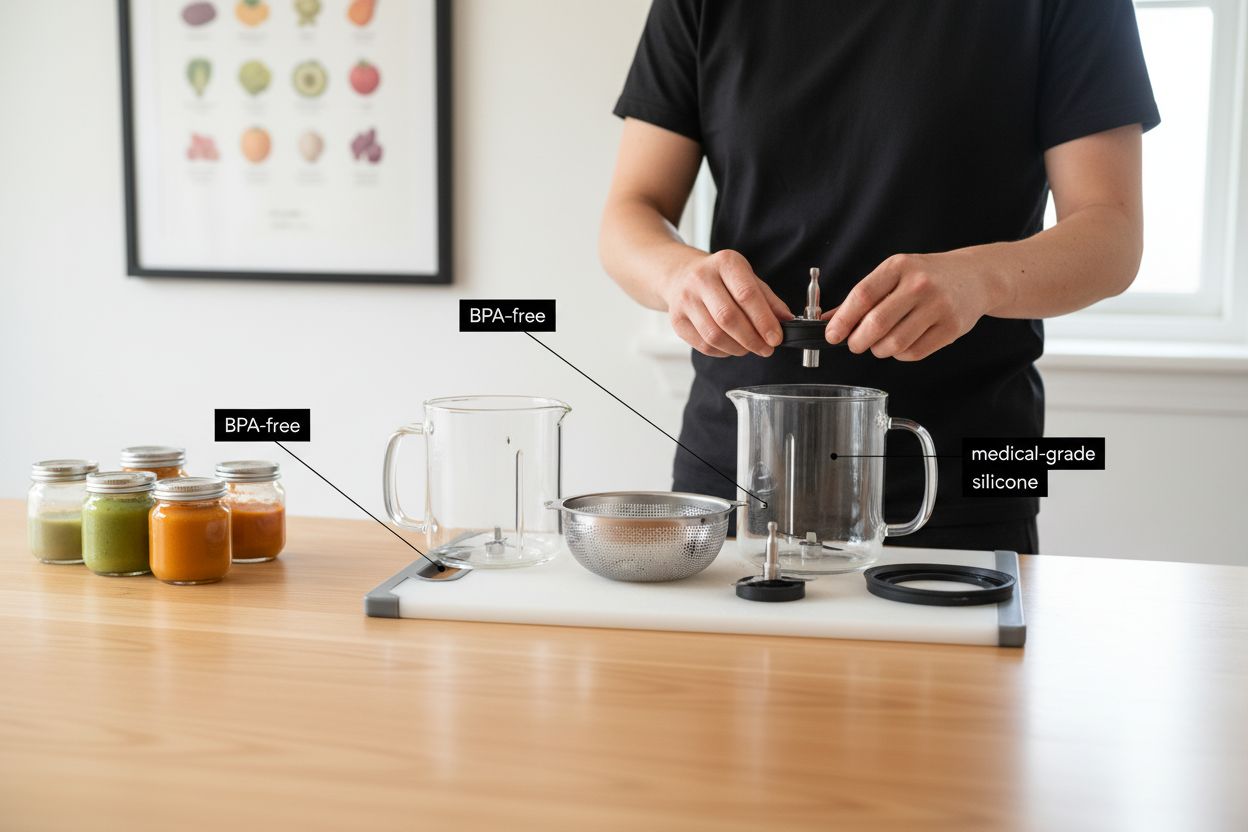
Critical Material Selection Guidelines
When evaluating baby food maker materials, prioritize these safe options:
- Glass with Stainless Steel Components: Offers maximum chemical inertness and durability
- 100% Medical-Grade Stainless Steel: Provides excellent heat resistance and minimal contamination risk
- Medical-Grade Silicone: Demonstrates superior chemical stability and heat tolerance
Chemicals to Absolutely Avoid
Certain materials pose significant health risks and should be completely eliminated from consideration:
- Bisphenol A (BPA): Known endocrine disruptor with potential developmental risks
- Polycarbonate: Can leach harmful chemicals under heat and stress
- Phthalates: Associated with potential reproductive and developmental complications
- Polyvinyl Chloride (PVC): Contains potentially harmful plasticizers
The safest baby food makers utilize FDA-approved materials like Tritan and polypropylene, which offer a balance between safety, durability, and performance. Parents should view material selection not just as a purchasing decision, but as a critical health investment in their child's developmental nutrition and long-term well-being.
Cost, Maintenance, and Long-Term Value
Investing in a baby food maker represents more than a simple kitchen purchase. It's a strategic financial decision that extends well beyond the initial price tag, encompassing long-term savings, practical usability, and potential multi-child functionality. Smart parents recognize that the true value of these appliances emerges through careful consideration of ongoing costs and potential utility.
Financial Considerations
The economic benefits of a baby food maker become apparent when comparing multiple purchasing scenarios:
- Homemade vs. Pre-Packaged Meals: Potential savings of $500-$1000 annually
- Multi-Child Usability: Can serve multiple children across different developmental stages
- Durability: High-quality models can last through 2-3 children's feeding phases
- Resale Value: Well-maintained units retain significant second-hand market value
Maintenance and Longevity Strategies
Ensuring your baby food maker remains functional and hygienic requires proactive maintenance:
- Regular Deep Cleaning: Monthly descaling and thorough component sanitization
- Component Replacement: Tracking and replacing worn seals, blades, and gaskets
- Storage Practices: Proper drying and storage to prevent mold and bacterial growth
- Warranty Tracking: Maintaining manufacturer documentation for potential repairs
Ultimately, a baby food maker is an investment in your child's nutrition and your family's convenience. By selecting a high-quality, durable model and maintaining it properly, parents can transform a seemingly expensive appliance into a cost-effective, long-term solution for infant meal preparation.
Comparing Baby Food Makers With Other Methods
Choosing how to prepare baby food involves evaluating multiple approaches, each with distinct advantages and limitations. While traditional methods like hand-mashing, blending, and store-bought options remain popular, baby food makers offer a comprehensive solution that addresses many parents' practical and nutritional concerns.
Traditional Preparation Methods Compared
Each baby food preparation approach comes with unique trade-offs:
-
Hand Mashing
- Pros: Minimal equipment needed, direct control
- Cons: Time-consuming, inconsistent texture, limited batch preparation
-
Standard Blender/Food Processor
- Pros: Versatile kitchen tool, multiple uses
- Cons: Requires separate steaming, complex cleaning, safety concerns
-
Pre-Packaged Baby Food
- Pros: Convenient, standardized nutrition
- Cons: Higher cost, potential preservatives, less freshness
Baby Food Maker Advantages
Here's a comparison of common baby food preparation methods:
| Method | Key Advantages | Main Drawbacks |
|---|---|---|
| Baby Food Maker | Integrates steaming & blending<br>Preserves nutrients<br>Easy cleanup | Upfront cost<br>Requires counter space |
| Hand Mashing | Low cost<br>Simple equipment | Time-consuming<br>Inconsistent texture |
| Standard Blender/Processor | Multi-purpose appliance<br>Larger batches possible | Extra steaming step<br>Difficult cleanup |
| Pre-Packaged Baby Food | Convenient<br>Long shelf life | Higher price<br>May have additives |
| Modern baby food makers bridge critical gaps in infant meal preparation: |
- Integrated Cooking and Blending: Single-appliance workflow
- Precise Nutrient Preservation: Controlled steaming temperatures
- Customizable Portion Sizes: Batch preparation with easy storage
- Safety-Focused Design: Child-friendly components and controls
Ultimately, baby food makers represent more than a kitchen appliance. They're a holistic solution designed to simplify nutrition, save time, and provide parents peace of mind during the complex infant feeding journey.
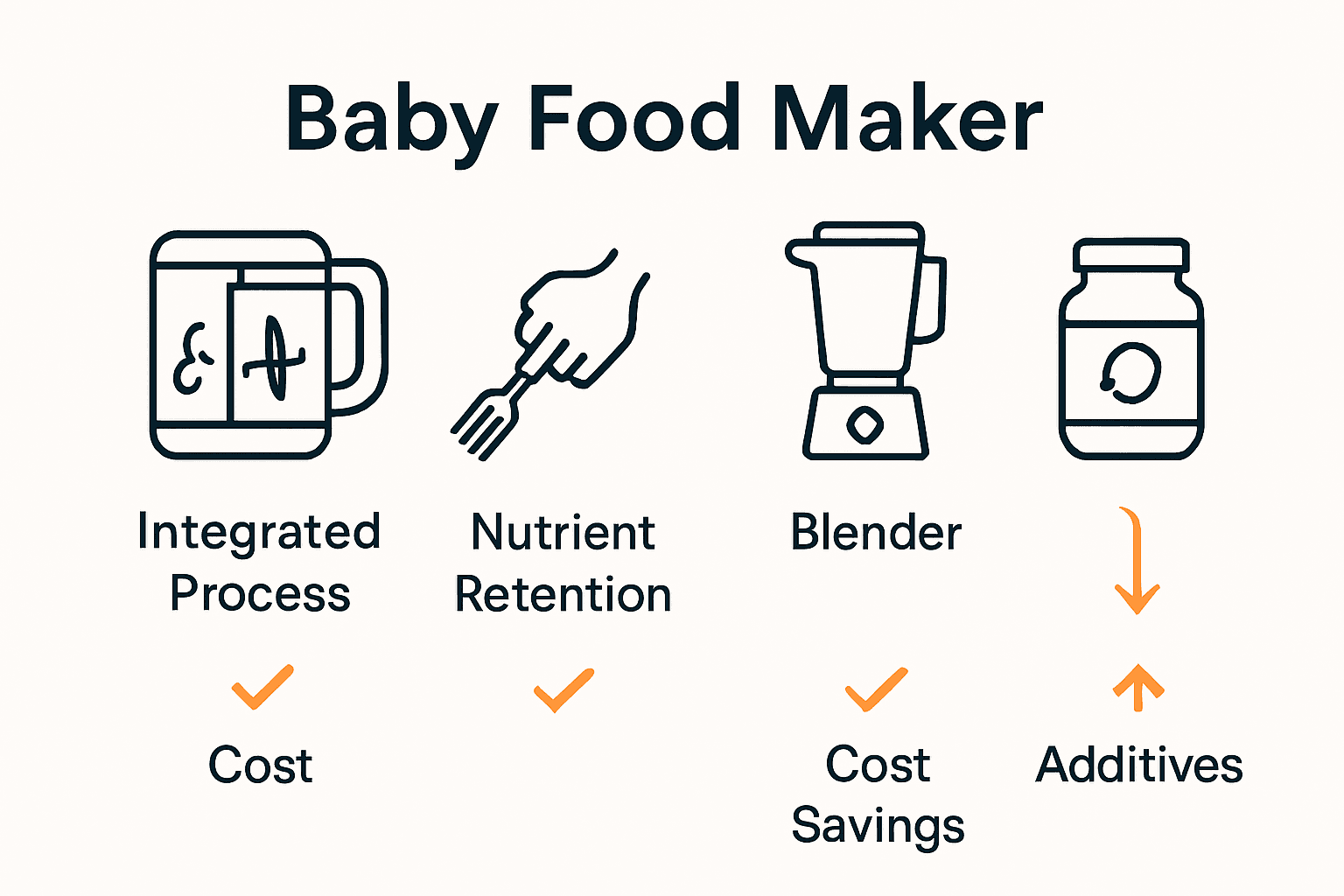
Take the Stress Out of Homemade Baby Meals
Are you struggling to find a quiet, easy-to-clean baby food maker that truly fits your family's needs? If you want to avoid kitchen mess, confusing product choices, or the worry of exposing your baby to unsafe materials, you are not alone. Our article has shown that making fresh baby food can help you save money and time while giving your child the safest nutrition. But finding the best tool for preparing meals quickly—especially during busy moments like naptime—can feel overwhelming and stressful.
Let Parent Kitchen Lab make this decision easier for you. Explore in-depth product reviews created just for parents who want simple, reliable information about noise levels, one-handed operation, durability, and safety including non-toxic materials. Ready to simplify your routine and make mealtime a joy? Visit Parent Kitchen Lab now and discover expert comparisons and buying guides that help you choose the best baby food maker for your growing family.
Frequently Asked Questions
What are the main benefits of using a baby food maker?
Using a baby food maker allows for nutrient preservation through gentle steaming, customization of meals without additives, cost-effectiveness compared to store-bought options, and time efficiency, as most food makers can prepare meals in under 15 minutes.
How do baby food makers differ from traditional cooking methods?
Baby food makers integrate steaming and blending functions into a single appliance, simplifying the meal prep process. Traditional methods often require separate equipment for steaming and blending, which can be more time-consuming and less efficient.
What should I look for when choosing a baby food maker?
When selecting a baby food maker, consider user-friendly design features such as one-step steaming and blending, compact size for space-saving, dishwasher-safe components for easy cleaning, and additional functionalities like digital timers and built-in storage containers.
Are baby food makers safe for my infant’s health?
Yes, but it's essential to choose a baby food maker made from safe materials such as glass, medical-grade stainless steel, and medical-grade silicone. Avoid appliances made with BPA, PVC, or phthalates to ensure your baby's food is free from harmful chemicals.
Recommended
Related Articles

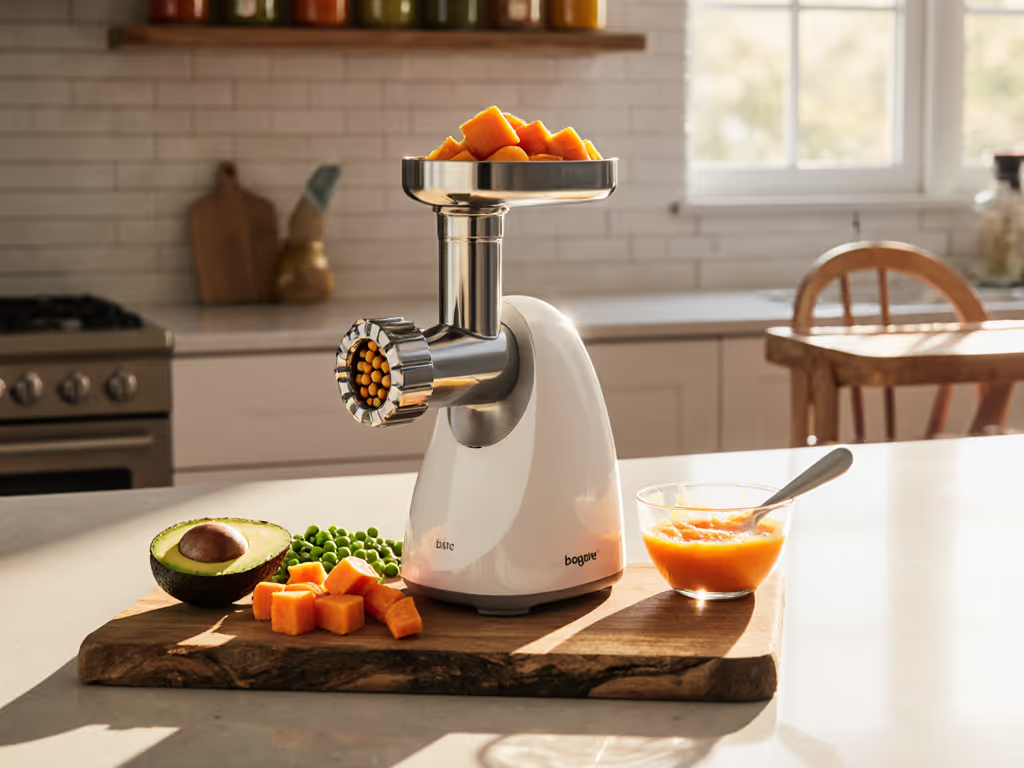
Baby Food Mill Explained: Features, Types, and Benefits
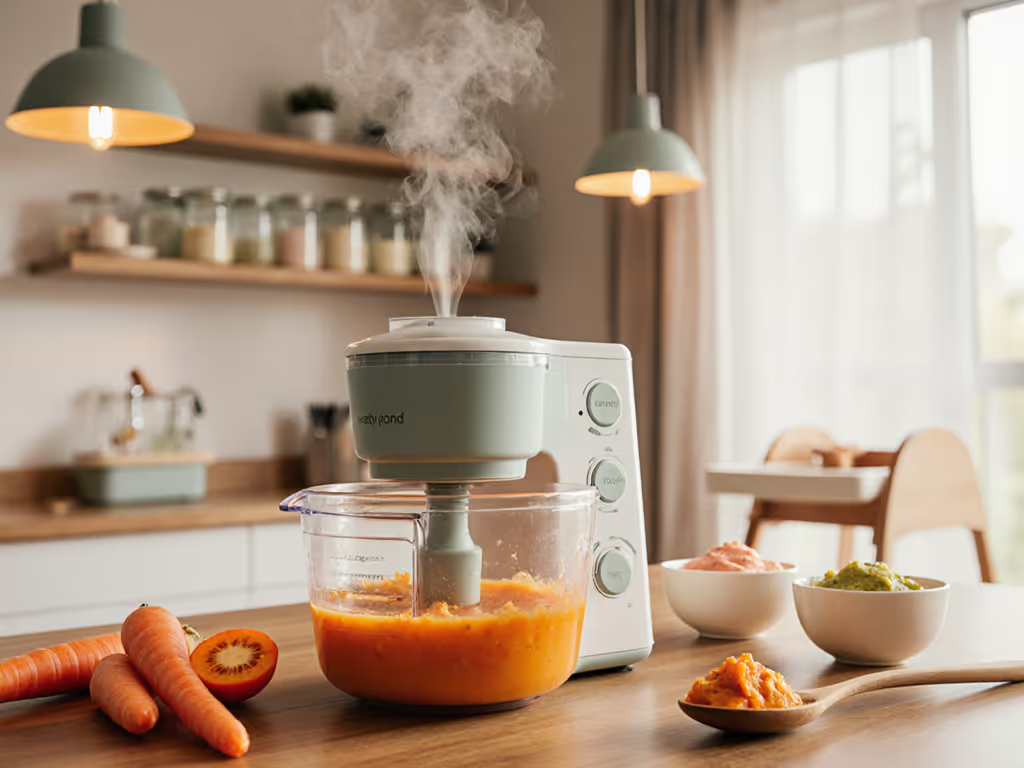
7 Must-Have Features in a Baby Food Maker for Parents
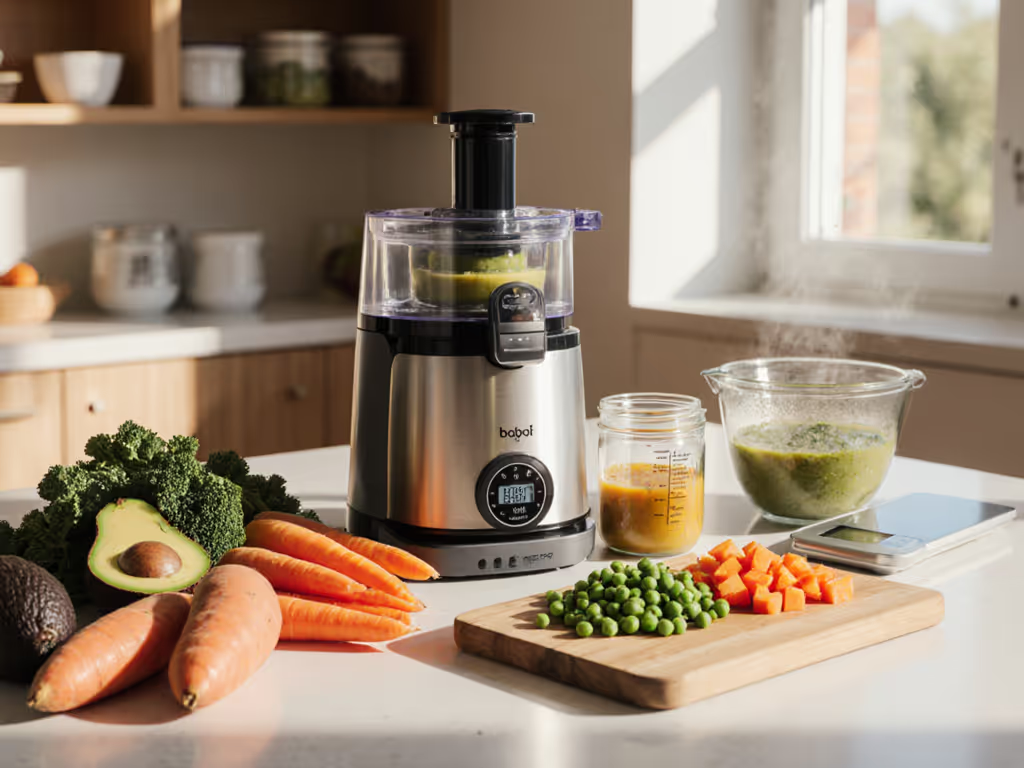
Master the Baby Food Preparation Process at Home
